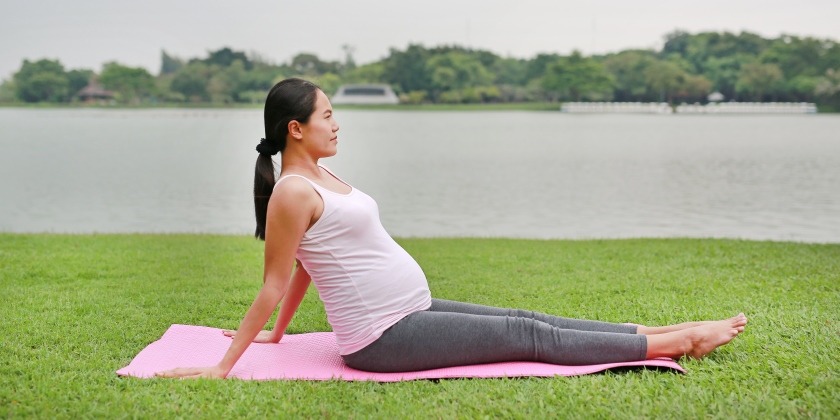To make changes to your eating or exercise you need to set goals to help you achieve them. People who set goals and plan the change are much more likely to accomplish what they set out to achieve.
Setting a good goal can be tricky. Deciding what you want to do without planning how to do it is no use. You first need to decide what you want to change and work toward how to do it.
-
It is something you want to do and will keep you and your baby healthy in pregnancy
-
It is reasonable and achievable (e.g. you could do it this week)
-
It is about a behaviour (e.g. I will walk with my partner after dinner).
Research shows that pregnant women who set goals for healthy change are more likely to achieve a healthy lifestyle
Changes you could make for a health pregnancy
Stuck for ideas? Try some of these goals:
Food ideas
-
Swap soft drink for soda water or still water
-
Swap fruit juice for a piece of fruit and a glass of water
-
Take a piece of fruit and a tub of yoghurt to work for snacks instead of biscuits
-
Add an extra serve of vegetables to the evening meal
-
Reduce the size of a meal by swapping a large plate for a small plate
-
Give away chocolate and lollies in the house and snack on fruit and nuts
-
Try three days of the txt4two menu
Exercise ideas
-
Plan to do 30 minutes of walking, five days each week
-
Buy a pedometer or activity monitor and aim for 10,000 steps per day
-
Join a pregnancy exercise class and commit to attending once per week
-
Do a 10 minute walk at lunch time to get the blood pumping
-
Organise a friend to meet you once per week for a long walk

Making a plan to change
To make a change in your life you need to make a specific plan. The plan should contain the following steps:
1. What are you going to do?
You need to decide on a specific task not something general such as “exercise more” or “eat better”. Will you walk, do an exercise class, eat more vegetables, cut out sugar sweetened drinks, eat fewer processed foods, like chips, biscuits, muesli bars?
2. How much will you do?
Will you walk around the block, complete a water aerobics class for one hour, eat one extra vegetable at dinner, replace soft drink with water or choose more nourishing snacks?
3. When will you do it?
Try and connect the timing of your new activity with an old habit that you have. For example, walk around the block after dinner or add extra vegetables to your dinner plate.
4. How often will you do it?
Often trying to do things every day is not always possible. It is often best to decide to do something three to five times per week. If you do more, that is great but it takes away the pressure and increases the likelihood that you will succeed.
5. Write down what you want to do and make a plan
Over the next week I will:
-
Walk around the block (what)
-
4 times (how much)
-
After dinner (when)
-
4 times per week (how many times)
For example, over the next week I will walk around the block four (4) times after dinner, four (4) times a week.

6. Rate how confident you are
Rate your confidence in completing your goal and plan out of 10. Where 1equals not at all confident and 10 equals totally confident.
If you rate your confidence more than seven then you have created a realistic plan. If you rate your confidence less than seven then you need to look again at your plan and work out if your plan is realistic.
Always remember to set a reward for your hard work
7. Choose a reward
Choose a reward for when you achieve your goal.
The best thing you will get from improving your eating and exercise will be better health but it is good to reward yourself for the changes that you make or goals that you reach. Rewards don’t have to be unhealthy or expensive.
You can also link your activity to a reward. For example, if you like listening to podcasts, why don’t you do this when you are doing your exercise?
-
A bubble bath
-
Buying fresh flowers
-
Buying a magazine
-
A foot massage
-
Time out for a manicure
-
Stream your favourite show
-
Coffee with a friend
-
At home facial
-
Time out for a pedicure
-
Listen to a podcast
-
Read a book